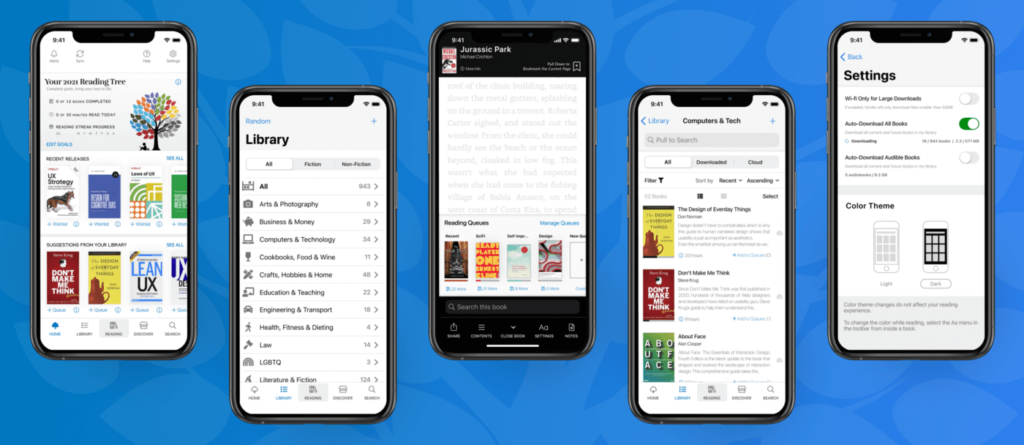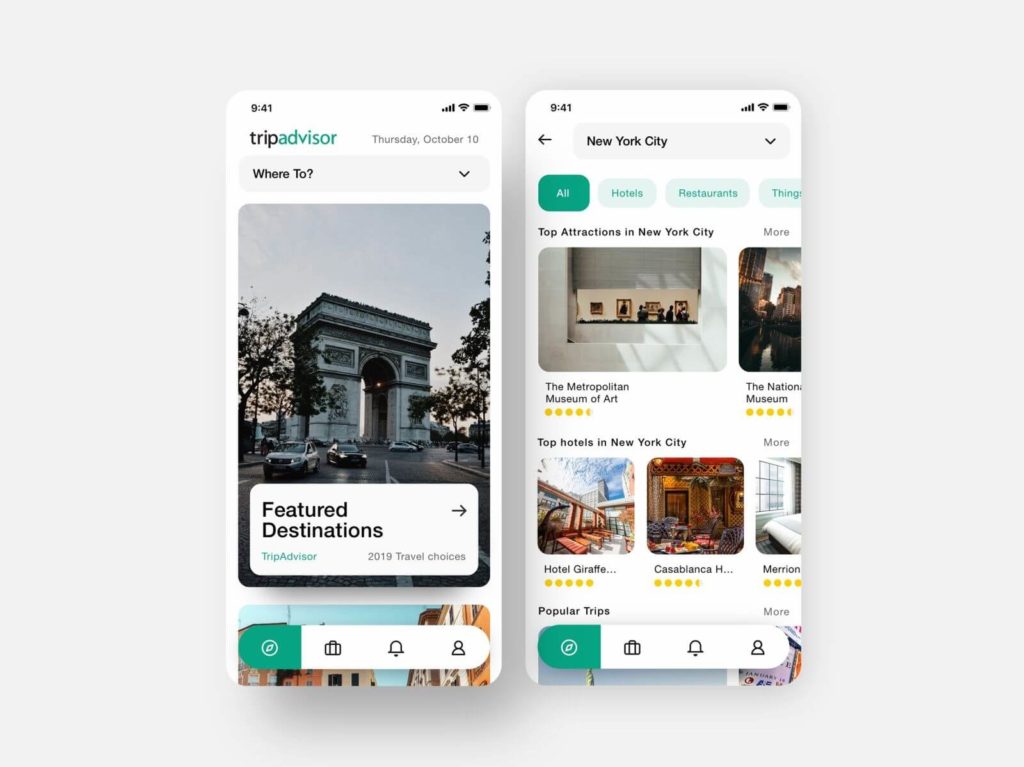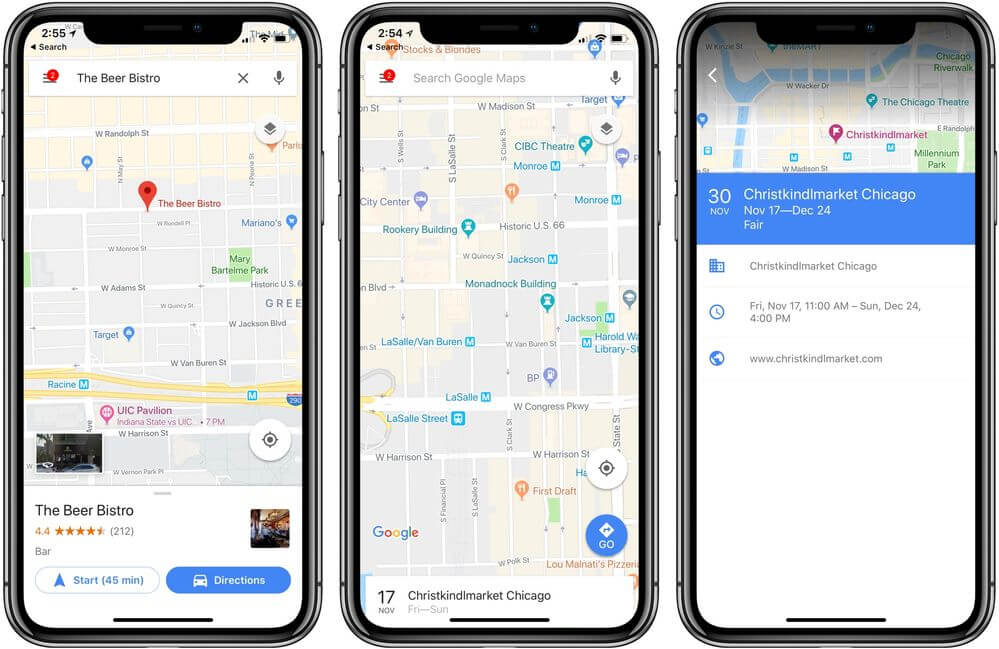How to Make Your App Work Offline: Technologies And Features
Most modern applications have offline functionality. While offline mode in mobile applications is quite limited compared to an online mode, it still plays a huge role in user experience. Learn how to make an app work offline, and how offline functionality can benefit your business.
What are offline apps?
To be precise and specific, when we say that an application is offline, it means that the application can survive the downtime and can be resumed from the same point we left due to connection loss. For example, messaging apps like WhatsApp and WeChat allow users to send messages to their contacts who don’t currently have an internet connection, but once they get out of the no internet zone, they’ll get the message.
Today it’s hard to imagine an application without any offline functionality. When the network is off, a user still needs to be able to get something from your app, especially if it has something to do with messaging, tourism, location, reading and more.
If you’re wondering what’s the use then I should remind you that you don’t have to wait to type a message, you can send it whenever you want, which we usually forget after a while. Many other apps work in the same way, such as Google Maps, the FeedMe news app, AccuWeather, Pocket, Amazon Kindle, Trip Advisor, Google Drive, offline dictionaries, Pocket, Google Translate, and many more.
There are several popular game apps like Candy Crush, Angry Birds, Temple Run, and City Island that are categorized as offline apps. These applications are primarily designed to sync with the cloud but can withstand downtime. At the same time, standalone applications must work outside the cloud. So, it’s a tricky thing, and that’s why we’re here to answer many of your doubts about offline-first mobile app development.
Best offline apps
Take a look at some Android and iOS offline mobile apps examples. They can inspire you to create something like this.
Spotify
Spotify is the world-famous music app that you’ve probably heard of (maybe you’ve used it too?). It gives access to a huge number of songs for all tastes. What’s more, you can set offline mode and listen to your favorite tracks even when you don’t have an internet connection.
Kindle

Amazon Kindle is an excellent reading app with online and offline versions. The benefits of this service include the following:
- synchronization with the account, which allows the user to continue reading from the place where he finished enjoying the book last time;
- saving all the latest settings (selected text fragments are also saved);
- options for easier reading (the ability to change the font size and style, background color, screen brightness, etc.);
- search on the page by words;
- support for modern text file formats: PDF, TXT, AZW, PRC;
- and, of course, convenient offline mode!
TripAdvisor

Another popular example of offline applications is TripAdvisor, a dedicated travel application. It offers a lot of useful features that enable tourists to travel with knowledge. Best of all, TripAdvisor gives you offline access to a number of options, including in-depth reviews, maps, and images (which is true of over 300 cities).
Google Drive
Although Google Drive is one of the world leaders in cloud storage, it has also taken care of offline support. It is enough for the user to enable the offline access option, and he will be able to work with the file regardless of the availability of the Internet (naturally, synchronization with cloud storage is also provided).
Offline Dictionaries
The title is very telling, isn’t it? Undoubtedly, the program belongs to offline mobile application services. The Offline Dictionaries app has a huge database of all kinds of words, phrases, idioms, and synonyms and supports more than 50 languages. And, of course, the traveler can use the app without having to worry about accessing the online mode (he only needs to download the languages of interest to the device).
Google Maps

In the past, the offline version of Google Maps left a lot to be desired. Fortunately, the company has improved its service, and the updated Google Maps has an intuitive, user-friendly offline app design and enhanced functionality (which is available even without an Internet connection).
The user is allowed to download detailed city maps and use them fully offline; moreover, these cards will be automatically deleted in a month (this approach avoids the situation of overloading the device’s memory without a real need).
Benefits of offline functionality
A poor internet connection can lead to a poor user experience. Apps with the wrong UX are annoying and many users may simply uninstall them. Here are a few benefits of using a standalone mobile app that will improve the user experience and help your business maximize profits:
1. Get a competitive edge
Every application now has at least one competitor because the market for applications is so big. Consider Facebook and Whatsapp Messenger, or Lyft and Uber. People generally choose apps based on some factors.
Some people opt for the best performance while others prefer the incredible design. However, what if your competitor launches an online application when yours isn’t running? You have more opportunities to outperform your competitors in offline areas.
2. Bad connection will not annoy users
If you’re developing a standalone mobile app, it can be used in areas with poor connectivity. Be sure to consider where your potential users will be during the day. Ask yourself if your app’s users are in a location with limited access to data or Wi-Fi. If this is the case, developing a standalone app can improve user retention and acquisition.
3. Get more loyalty from users
When users know that your app is reliable in poor connectivity areas, they will become more loyal.
4. No roaming charges while traveling
When you travel abroad, some applications require a large amount of data to access a large data network. This can be costly as using a standalone application allows you to access it for free.
5. Fast loading time
Offline mobile apps are not only useful for saving data or money, but they also come with a lot of features. They ensure fast loading even on poor connections and offer organized access to all the features of the application.
6. Effective device battery
This is the most useful advantage of the offline mobile application. This saves your phone’s battery, which is usually used more when you travel, and your cell phone turns off when you are about to reach your destination. Using the standalone app avoids this condition.
Tips for choosing offline features for your app
Here are some tips to help you:
- Assess your workflow, identify your business requirements, and turn them into application features.
- Give these features a priority, as once they are important to your business, they become urgent.
- Determine what you need to do with your app. Share this information with your developers. Let them understand your business objects and recommend precise technologies for a customized solution.
You can use the popular Eisenhower decision matrix to select standalone features. This will help you see what is needed and what is not. Using this matrix, you can have many standalone features and analyze how to execute them.
The company that provides custom app development services should give you a list of the best technologies for an offline application that aligns with other needs of your business.
How to make your app work offline?
This is now a key task for you (as the app owner) and for the mobile app developer. To deal with a user’s mobile network disconnection, you need to make sure that user app updates sync smoothly with the server. Thus, when designing an application for recurring connections, there are three main activities that are important: synchronization, serialization, and conflict resolution.
There are several commercial servers and platforms available on the market that can perform offline data synchronization. The goal of developing an offline application is to create an application that can switch between offline and online mode, or use the application offline most of the time (for example, a game application). You can choose one of the following three guidelines to start developing a standalone app:
- The application must be able to maintain a regular copy of the application’s data and structure.
- Data synchronization must be bi-directional between the application and the cloud server.
- Some mechanisms must be used to resolve conflicts that may arise due to multiple updates.
Initial data synchronization
Whenever the application (that you created offline) is run for the first time, it checks to see if there is any data in the server’s database. If the data is present, it downloads the data and saves it to the local database.
Local data synchronization
To perform basic CRUD operations, the application interacts with its local database, and the server synchronization flag can be set. Then the application looks for network availability. When a mobile connection (via mobile data or Wi-Fi) is detected, the app synchronizes local data with the server database using the REST API. If successful, the application updates the server synchronization flag.
On the other hand, if there is no connection or the sync fails for some reason, the application goes through the same process again with the background sync service. This continues at regular intervals.
Server data synchronization
As with updating the local application in the previous step, if there is a server update, it must be pushed to local copies. In this case, the server informs the client using FCM/APNS, which runs the synchronization service in the background. This is how the synchronization services retrieve all data (update) and resolve conflicts if any. The local data is then updated to the server values.
Conflict resolution
You can resolve conflicts locally using timestamps. Whenever the data is updated, a timestamp is recorded, and the synchronization service ensures that the most recent data is updated everywhere. Later, using the timestamp of the data, conflicts between local data and server data are resolved. So now when local changes are sent to the server, the sync flag is updated along with the timestamp.
It is important to note that no matter what strategy you use on the server to coordinate changes, there will be conflicts between two pieces of data. You must be ready to deal with this problem. For example, if a conflict occurs when a user is editing in two places at the same time while he is offline, then he should only receive a warning message when he is offline.
Thanks to advanced technologies and methods, you can now prevent conflicts from occurring. This can result in the application being designed in such a way that anomalous data from any source does not lead to conflict. When the connection is resumed, the application receives a callback from the appropriate operating system (OS), and the synchronization service is activated.
Technology tips for offline mode
The technologies you choose will have a huge impact on your application’s offline performance. Consider the following when choosing technologies:
1. Cycles and time of data synchronization
Data must be prioritized according to business requirements. Some data needs to be updated once a year, others several times a day. You can choose different sync cycles for different data according to your business needs. Small data packages need frequent updates. Your application may not require constant data synchronization. If necessary, you can synchronize data at a specific time.
2. Regularity of data synchronization
Frequent reconnections can drain your mobile phone’s battery. However, if your app syncs infrequently, users may miss out on needed updates. To find a balance, work with your developers. You will need to check how often your users can use high-speed internet. If people use your app for work, decide which slots are appropriate for downloading data in their work schedules. If the data connection is better, these slots may be shorter.
3. Privacy management
The user’s personal information cannot be deleted for security reasons. Downloaded data, such as blog posts and logos, is stored in a cache folder on the user’s device, so it does not need to be downloaded every time the user uses that content. By clicking the back button in the browser or by checking the browser cache, you can view the cached information. This puts sensitive data such as usernames and credit card information at risk. Hence, make sure that sensitive information is not cached.
4. Handling changes to shared data
In the event that some users are offline, data changes may not be available to others. Thus, many users can work with similar information without checking how others have changed it. If you can’t ignore such a scenario, focus on managing exceptions and defining the rules for handling those exceptions.
5. Synchronization methods
To select the most accurate technologies for your offline mode, check whether the data transfer should be synchronous or asynchronous, whether the data will be synchronized manually or automatically, whether the application will actively request updates from the server, or whether the server itself will send new data to the server. Appendix.
Final thoughts
Offline functionality is a must for most modern applications, that’s why it’s very important to plan it beforehand, build an offline mobile app architecture, and adjust the technology stack accordingly. In this article, I gave you an overview of the best practices of offline app development. If you want to learn more about building offline functionality for your app, please contact us.
Mobindustry has over 10 years of experience in building applications, most of which have offline functionality. We’ll be happy to help you create a pleasant user experience that doesn’t dwindle even when the network is off.


